Casting the Ephemerality
| 2019 |
| photo print |
| 40 x 30cm | serie of 45 photographs |
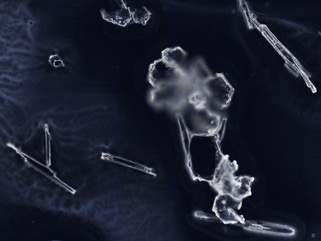 |
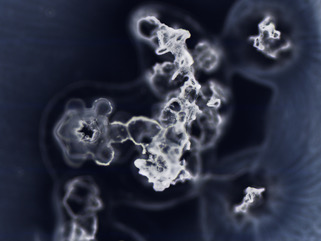 |
 |
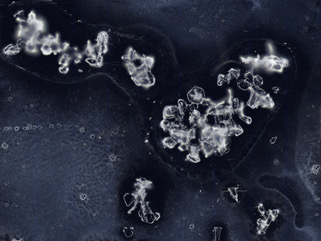 |
 |
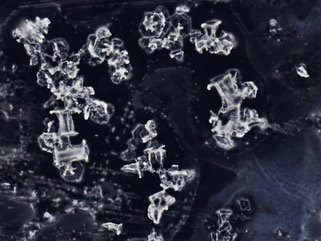 |
 |
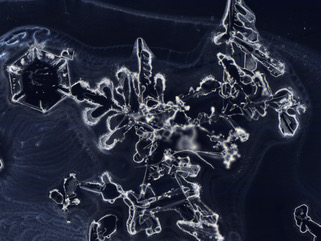 |
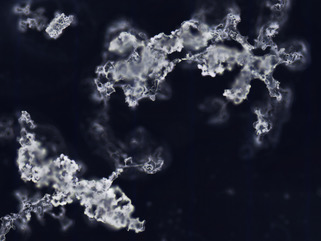 |
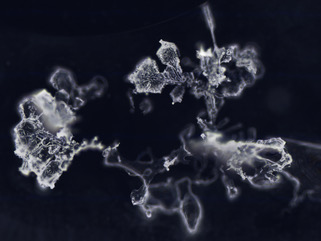 |
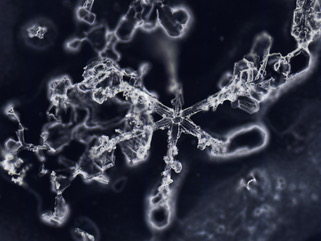 |
 |
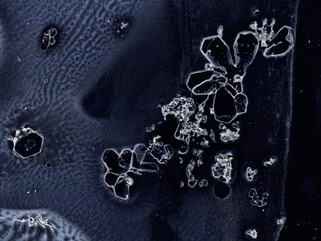 |
 |
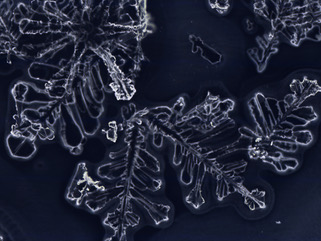 |
 |
| Exhibition: Maritime Museum of Ushuaia, Argentina | |
«The fact that someone is travelling all the way to Antarctica, to the most remote and wild place on earth, to catch a snowflake in order to answer one of the most important contemporary questions, namely climate change, is very touching and bears a poetical gesture.»
These exhibited photographs, from the series «Casting the Ephemerality» are developed from a scientific dataset realised during the Swiss Antarctic Circumnavigation Expedition (ACE) as part of the science project «quantifying precipitation and its contribution to surface freshening in the Southern Ocean». A team of international scientist collected formvar replicas of the detailed characteristics of snowballing over the Southern Ocean. The formvar replicas were afterwards scanned at high resolution to creat 2.5 dimensional digital models with up to 51 focal planes.
The Yvonne Weber's interest in collaboration with the scientists is in what artist and scientists have in common, such as applied methods and instruments. While the scientist's are using this data to develop models to explain precipitation in Antarctica, trying to generate scientific knowledge to be implemented in larger scale climate models, the artist is using the same data set to demonstrate in the exhibited photo series the transience of these objects. Documenting with her photos a fragile, ephemeral world underlaying constant changes, which we affect and and are hopping we are able to predict their state. However it's a fact that what we see in the photographs are not the real snowflakes. We are looking at resin casts, or replicas, a method used by scientists and artists to understand their environment. Here the art piece is referring to this crucial point in modelling. A cast was made and the original has evaporated away. This is not the only difference to traditional snowflake photography, which these images is refer to with choice of a black background color. The play between with the sharpness and the blurriness of the pictures should let the observer unterstand that these are 3 dimensional objects in a 3 dimensional space, usually occurring as conglomerates, what we call snow. And their appearance changes depending on the focal plane we choose to view.
In the end we can only be left with wonder and awe, humbled by this beauty and confronted how little we know about this common but extremely short-lived snowflakes.
Collaborators:
Dr. Katherine Leonard, University of Colorado, Boulder, United States
Prof. Michael Lehning, École Polytechnique Fédérale de Lausanne EPFL, WSL Institute for Snow and Avalanche Research SLF, Switzerland
Dr. Irina Gorodetskaya, University of Aveiro, Portugal
Thanks to:
the Swiss National Science Foundation, the US National Science Foundation,
the Swiss Polar Institute and the University of Zurich Center for Microscopy and Image Analysis
